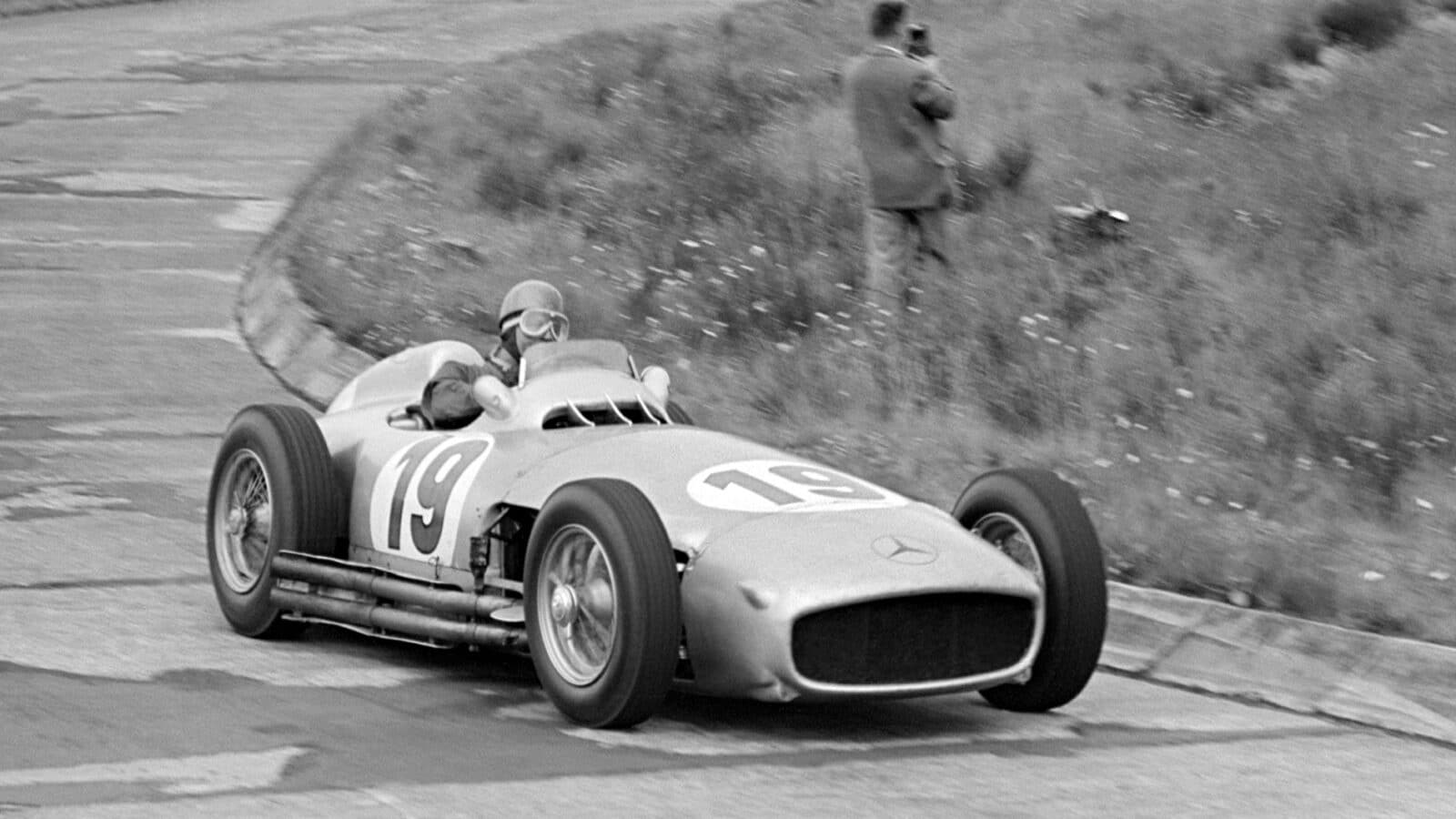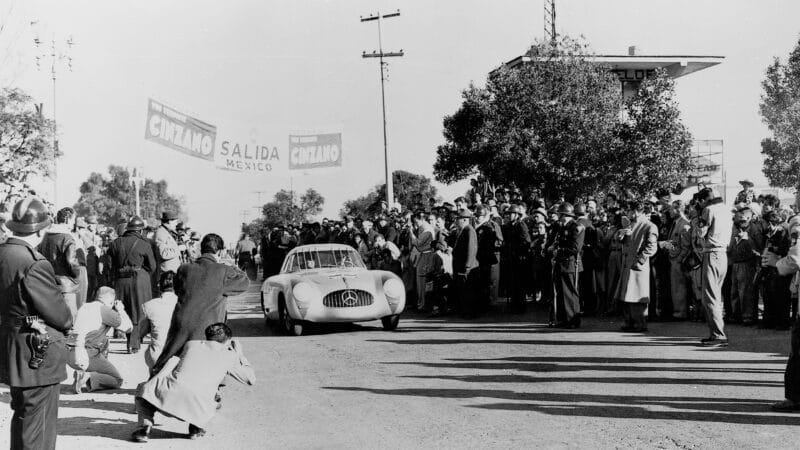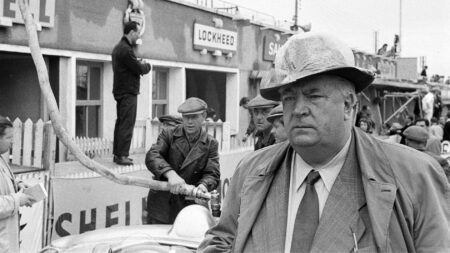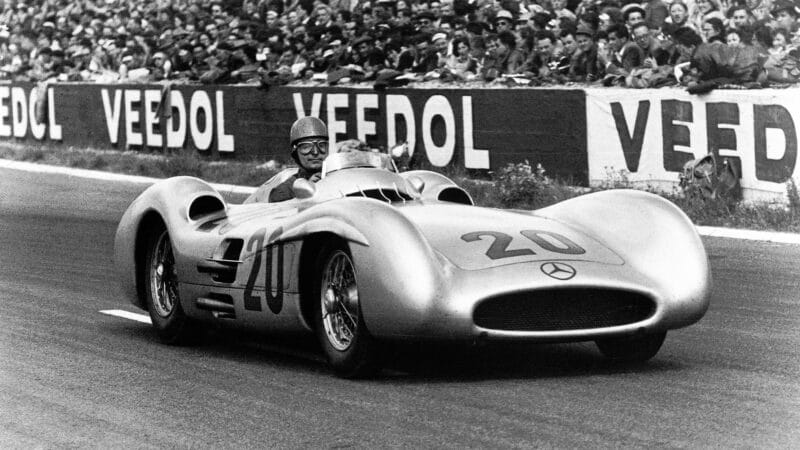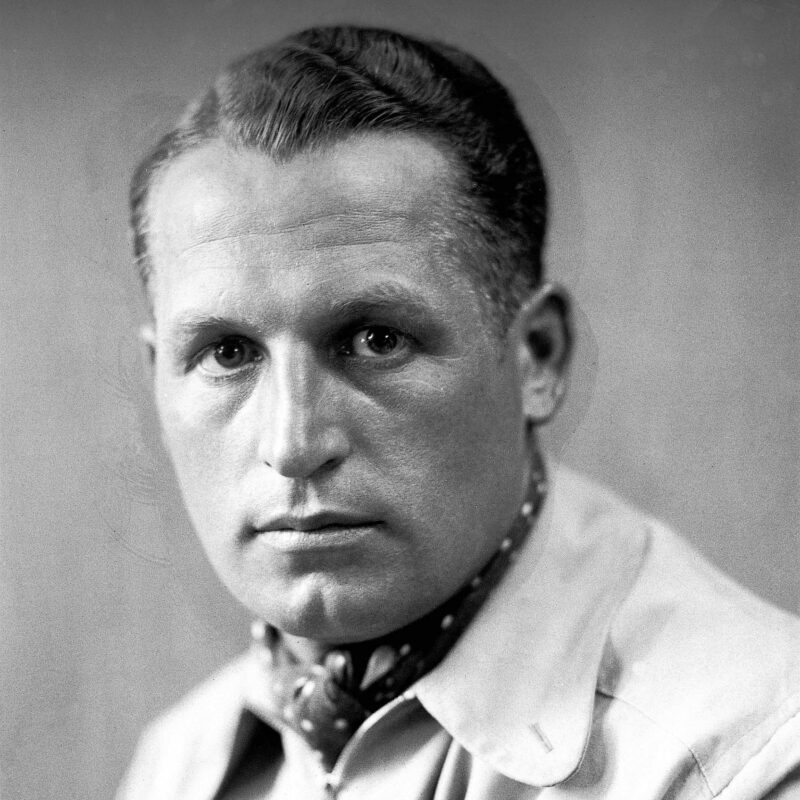The Nordschleife always kept a place in his heart, not least because it was there, in 1954, that he drove perhaps the best race of his life. He did not win that German Grand Prix but remembered it with particular satisfaction.
“I had to start from the back of the grid because my car lost a wheel in practice before I’d been able to set a time. In the early part of the race I passed a lot of drivers and eventually got up to second place, behind Fangio. If the main thing was that Mercedes should win it was quite correct that the team orders should be in Fangio’s favour, because he had the best chance to win the championship.”
In the pits, therefore, there was consternation when Kling not only caught Fangio but went by him, at which point legendary team boss Alfred Neubauer began hanging out pit signals.
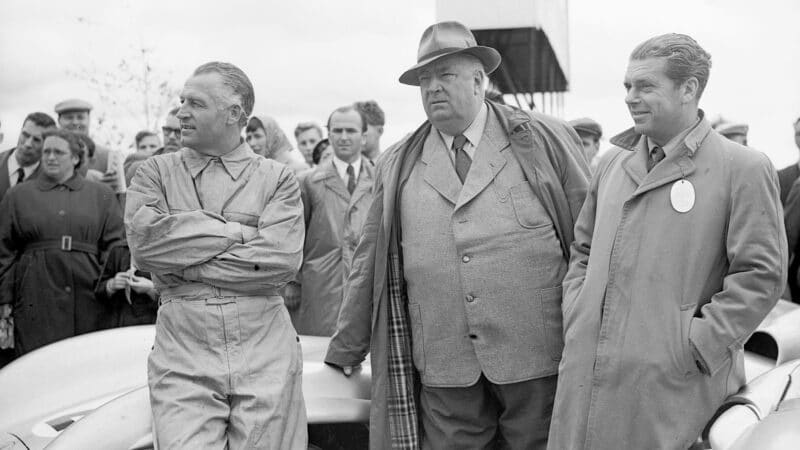
Left to right Kling with Neubauer and Uhlenhaut at Silverstone in 1954
Evening Standard/Getty Images
“I was not really trying to race with Fangio,” Kling said. “From quite early on I had a fuel leak and knew I would have to stop for fuel — which was unusual because, in those days, we used to do the whole race on one tank and one set of tyres.
“Of course, we had no radio contact with the pits then, so Neubauer and the others didn’t know of my problem. I drove like a madman that day, quite honestly; our normal rev limit with the W196 was 8500rpm, but that day I used 9000 most of the way, and I didn’t care about it! After a time I began to worry about the rear axle, too — the mounting had broken on one side.
“The Nürburgring was my home track and I covered many kilometres of testing there. And that day I was faster than Fangio. Of course, in the final analysis, I wouldn’t have attacked him, but I had to go flat out to make up the time I knew I would need for refuelling, and to get the axle mounting repaired. Then I went back into the race, but the car wasn’t really perfect any more.”
